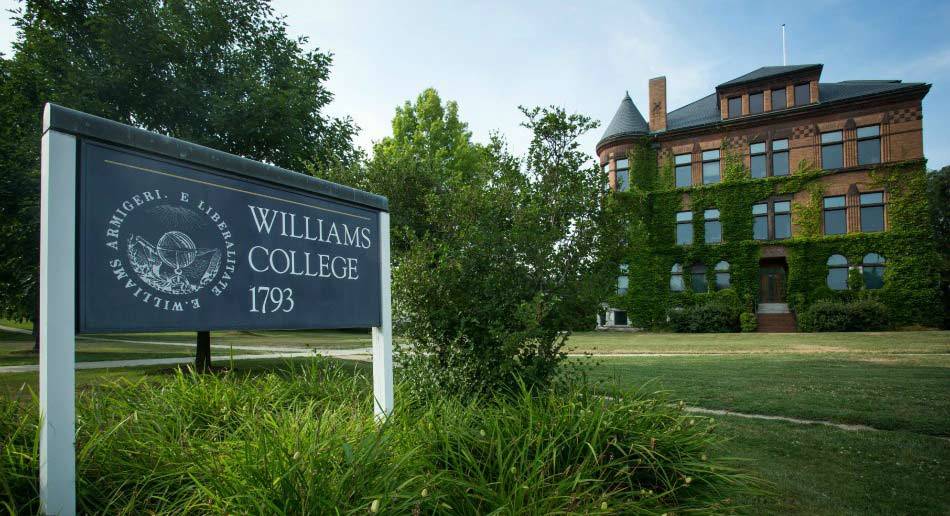Education
WI-FI Elevates the Student Experience
Your students view Wi-Fi as a standard utility in the classroom, and especially the residence hall—as basic as electricity or running water. Accessing high-bandwidth video services, gaming, class materials and social applications is a big part of engaging in campus life. If you’re asking students to spend years of their lives at your institution, you better be prepared to give them the same kind of social, mobile and connected experiences on campus that they have at home.
To do it, you’ll need to find ways to onboard and manage all those diverse devices without creating constant headaches for your users and your help desk. You’ll need to deliver consistent performance across thousands of dorm rooms and tens of thousands of devices. And you’ll need to accommodate students, faculty and guests using devices you can’t control, without compromising security.

Smart Campus Solutions
A new survey of college admissions directors from Inside Higher Ed and Gallup found that just 34% of institutions are meeting new student enrollment goals. What can IT do to help attract and retain students? How are you helping students to engage more deeply with campus life? What have you put in place to help your institution stand out—among faculty, researchers and organizations awarding grants—as a leader and innovator?
Smart Campus is a new approach leading colleges and universities around the world are investigating.
Introducing the Smart Campus
What, exactly, makes a campus "smart"? At the highest level, a Smart Campus uses IoT to link devices, applications, and people to enhance and enable new services while improving operational efficiency.
A Smart Campus starts with ubiquitous, reliable wired and wireless connectivity everywhere—indoors and out. However, while that kind of connectivity may once have been a goal for many colleges, it’s just the beginning of a Smart Campus. By sharing a common technology infrastructure, campus infrastructure and once disparate systems can interact with each other to transform student living, learning and campus security.
Links:
Ruckus Wireless Seniors Case Study
Ruckus Wireless Better Networks
Sound Masking in Education
Protecting your students’ privacy isn’t just an add-on – it’s the law. The Family Educational Rights and Privacy Act (FERPA) mandates that post-secondary institutions take all reasonable efforts to safeguard student information including how the information is collected, stored, used, and released. Many institutions have established effective security measures to protect the data stored on their servers but overlook the need to safeguard client information during its collection and use. Sound Masking solutions help protect speech privacy by making it more difficult to overhear people speaking.
In addition to providing a more secure and private environment for your students, sound masking can also help reduce distractions. Adding sound masking in education settings, such as to your libraries, student centers, classrooms, and other study spaces will ensure minimal disruptions to students while they are studying or taking tests.
Cambridge Case Study: Williams College
“Our library was so acoustically lively; the students were shushing the librarians! Now, our space is as appealing functionally as it is visually.”
– David Pilachowski Director of Libraries Williams College

Industry Challenges
- Each day, hundreds of students share sensitive information relating to finances, grades, housing, and personal health.
- There is a high risk of personal information being overheard in adjoining corridors, waiting rooms, and communal spaces.
- Many older facilities include high open ceilings and large reflective surfaces like glass windows and brick walls, creating more noise distractions through reverberation.
Education - Security Cameras/ Access Control
With growing concern for safety in our schools across the nation, school systems are taking a renewed examination of their security equipment and protocols. Traditional video surveillance systems do not provide enough situational awareness and early detection. Many schools are now leveraging the combined technologies of audio and video surveillance to keep their students, staff and campuses safe.
Integrating microphones, intercoms and two-way speaker phones with cameras gives staff access to more details about a suspect or scene. Voices, names, languages spoken, and directions are just a few examples of what information can be aggregated. Beyond detection, audio monitoring creates opportunities for de-escalation and prevention. Having the ability to communicate in real-time can be a powerful warning that dissuades a trespasser from vandalizing the property or committing other offenses. Adding audio equipment to your system is a cost-effective investment that improves the security system while requiring minimal installation.
